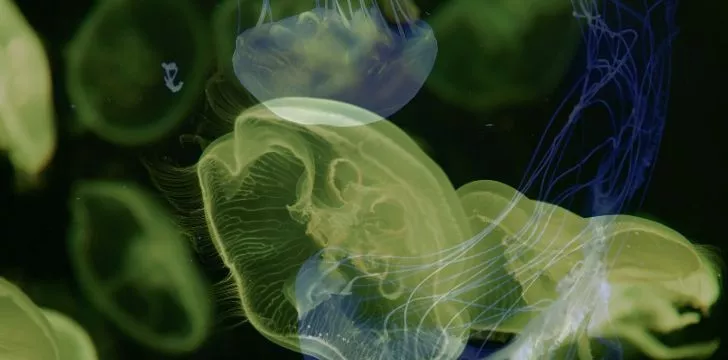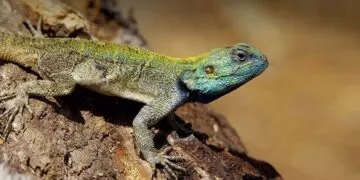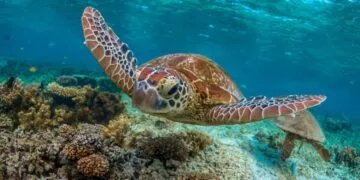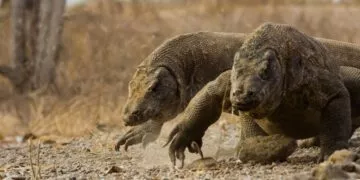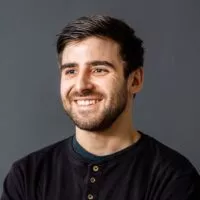On this planet (and let’s face it, mostly in Australia) there are a whole host of deadly creatures that can kill you a thousand times over with a single bite or sting – spiders, scorpions, snakes and… snails?
Yes, there’s even deadly snails out there, and where are they you ask? Australia. Shocker!
When we talk about these animals as being venomous or poisonous, what does that mean?
What exactly is the difference between “venomous” and “poisonous”? And how does venom or poison differ from a toxin?
Well, I can break it down in a very simple manner: if you bite it and you die, then its poisonous.
If it bites you and you die, it’s venomous.
And toxins are deadly biological secretions from living organisms, meaning both venoms and poisons are toxins.
So, let’s break it down a bit more.
What’s a Venom and what’s Venomous?
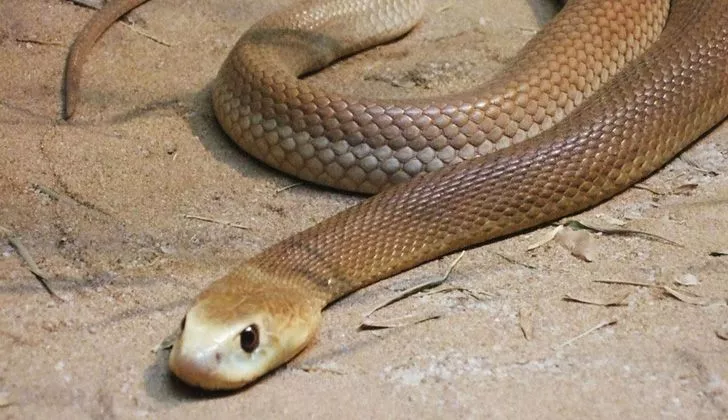
For a venomous creature to deliver its deadly cocktail of chemicals to you it has to bite you, or deliver its chemicals another way such as a sting in the case of a scorpion.
So, with a venomous creature, the delivery into the subject is an active delivery.
Let’s take a look at one of Australia’s most deadly snakes: The Inland Taipan. Or, as it’s known in some circles, The Fear Snake.
The Inland Taipan is considered one of the most venomous snakes on the planet – a single drop of its venom is deadly enough to kill 100 adult humans or 250,000 mice. And that’s just one drop, it generally injects anywhere up to 110 milligrams of venom per bite!
If you’re looking for something a little more legit and scientific as to what exactly constitutes a venom, then take this quote from the scientific journal Trends in Ecology & Evolution:
“[Venom is] A secretion, produced in a specialized gland in one animal and delivered to a target animal through the infliction of a wound ‘regardless of how tiny it could be,’ which contains molecules that disrupt normal physiological or biochemical processes so as to facilitate feeding or defense by the producing animal.”
So that’s the literal textbook definition of what a venom is, and it lays out what would happen to you if you were to be bitten by a venomous create.
But what if you yourself were to chow down on a venomous creature like the Inland Taipan?
Well first off, I can’t guarantee it would taste nice, nor can I guarantee getting hold of one would be easy given they’re some of the shyest snakes out there, but would eating it be deadly?
Nope. Not one bit.
This is because, whilst highly venomous, the Inland Taipan’s venom is stored in one specific part of its body, the venom glands in its head, whilst the rest of its body is just the same level of non-toxic flesh and blood as a chicken or a fish’s body.
Which means you could eat a venomous creature and as long as you don’t eat its venom glands then you should be fine.
And whilst I’m on that subject, I’d like to bust a quick myth here: apparently, if you are stung by a scorpion then eating the scorpion’s stinger will act as an antidote.
This is false. NEVER eat the stringer of a scorpion that just got you, but rather seek immediate medical help!
So, with that breakdown of what a venom is and what a venomous creature is, let’s move on to what a poisonous creature is.
What constitutes a Poison or a Poisonous creature?
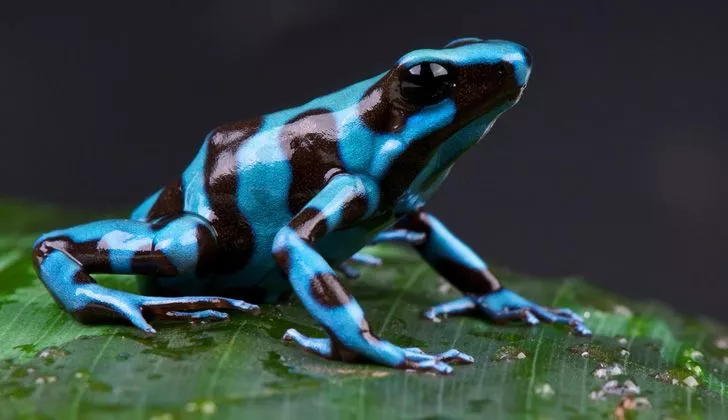
We know now that a venomous creature must actively pass the venom to its subject in order to do them harm, but a poisonous creature delivers its lethal toxins in a passive manner.
This is because most poisonous creatures secrete their toxins, usually through their skin, and as such their poison isn’t contained to any one place in their body like a snake’s venom glands or a scorpion’s stinger.
Let’s look at the example of the Poison Dart Frog. These vibrant-colored hallucinogenic little fellows are highly poisonous. Just one drop of their deadly secretions is enough to kill 20,000 mice or 10 adult humans.
However, these wonderfully colored little frogs have no way of actively delivering this venom to other creatures.
The only way it is possible to die from the toxins within a Poison Dart Frog is to either touch or eat it.
Which, as you probably already know, is why mother nature made them so crazy in their colors – to give everything else a clear “DO NOT EAT THIS DANGEROUS POISONOUS ANIMAL” warning, because it sure isn’t camouflage!
As a quick side note here: the reason behind the toxicity of Poison Dart Frogs is because of their diet, as they gain their poison secretions from the insects they regularly eat.
This is actually quite a common trait in the animal kingdom for poisonous animals, most often they retain the poison of their prey which they have become immune to.
Anyway, back on topic.
To get our textbook definition of what a “poisonous creature” is then let’s go to the Oxford English Dictionary, the nemesis of every detention-bound insolent child:
“An organism that produces toxins that are harmful when the animal or plant is touched or eaten.”
So, with that clear distinction in mind, are there any poisonous and venomous animals?
Short answer: yes.
There are a fair few animals that are both poisonous and venomous, although compared to animals that are either poisonous or venomous there aren’t that many.
One example is the Keelback Snake, which stores poisonous toxins in its nuchal glands as a result of the poisonous toads the snake eats.
And what exactly is a toxin?
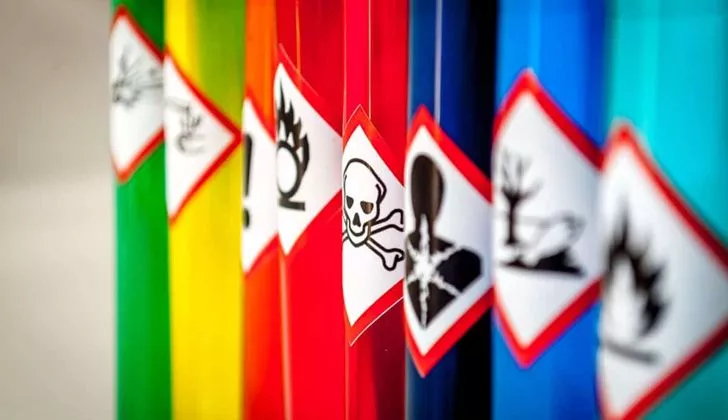
I mentioned earlier in the article how poisons and venoms are both toxins, and briefly touched on why, but here’s a bit more of an in-depth explanation on that one.
To give another textbook definition of a toxin we’re going back to that notorious tomb the Oxford English Dictionary:
“A poison of plant or animal origin, especially one produced by or deriving from microorganisms and acting as an antigen in the body.”
Now let’s not let the word “poison” in that quote throw us off.
Both venoms and poisons are produced by microorganisms in different ways and both act as antigens in the body of the recipient.
So, one last time to sum it up:
Poison – bite it and you’ll die.
Venom – it bites you and you die.
Toxins – an antigen produced in the body via a biological process.
Well then there you go, if you’re ever unfortunate to be bitten by a venomous snake at least you won’t make the grammatical mistake of saying you’ve been bitten by a poisonous snake whilst you frantically call the emergency services!

